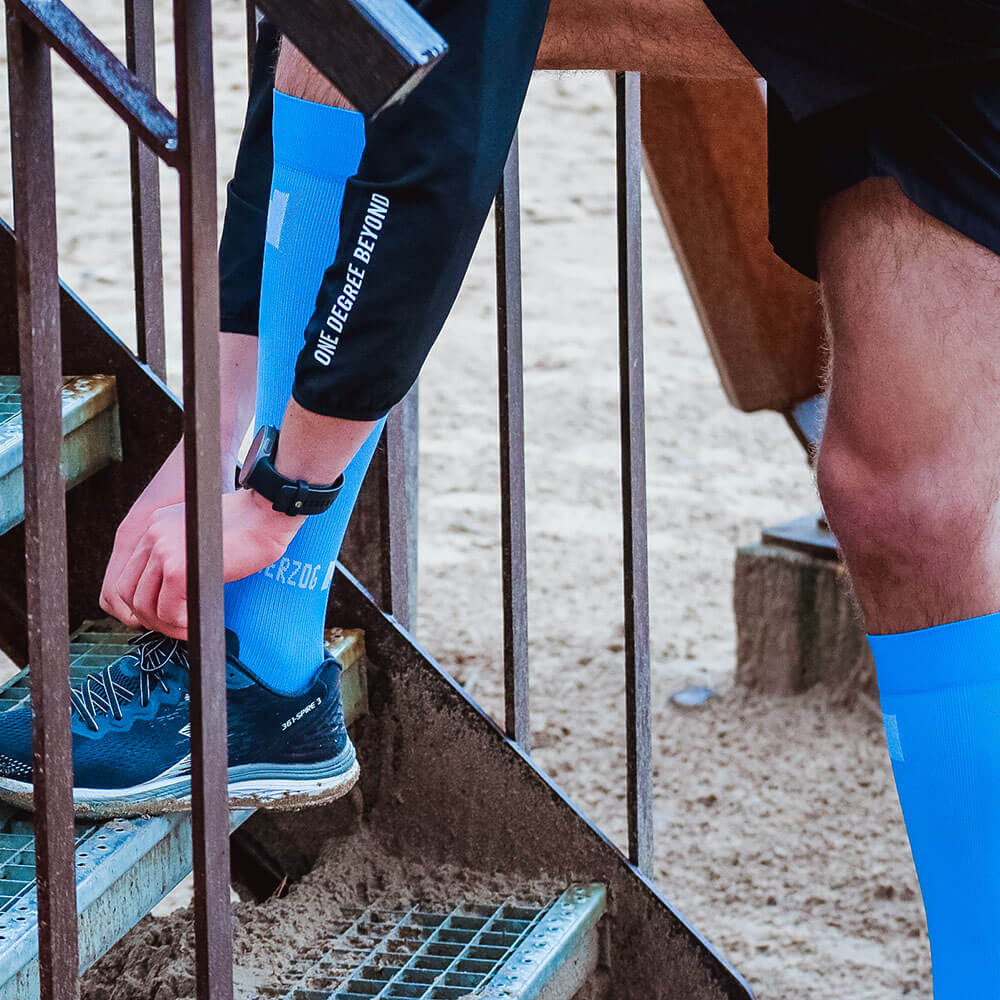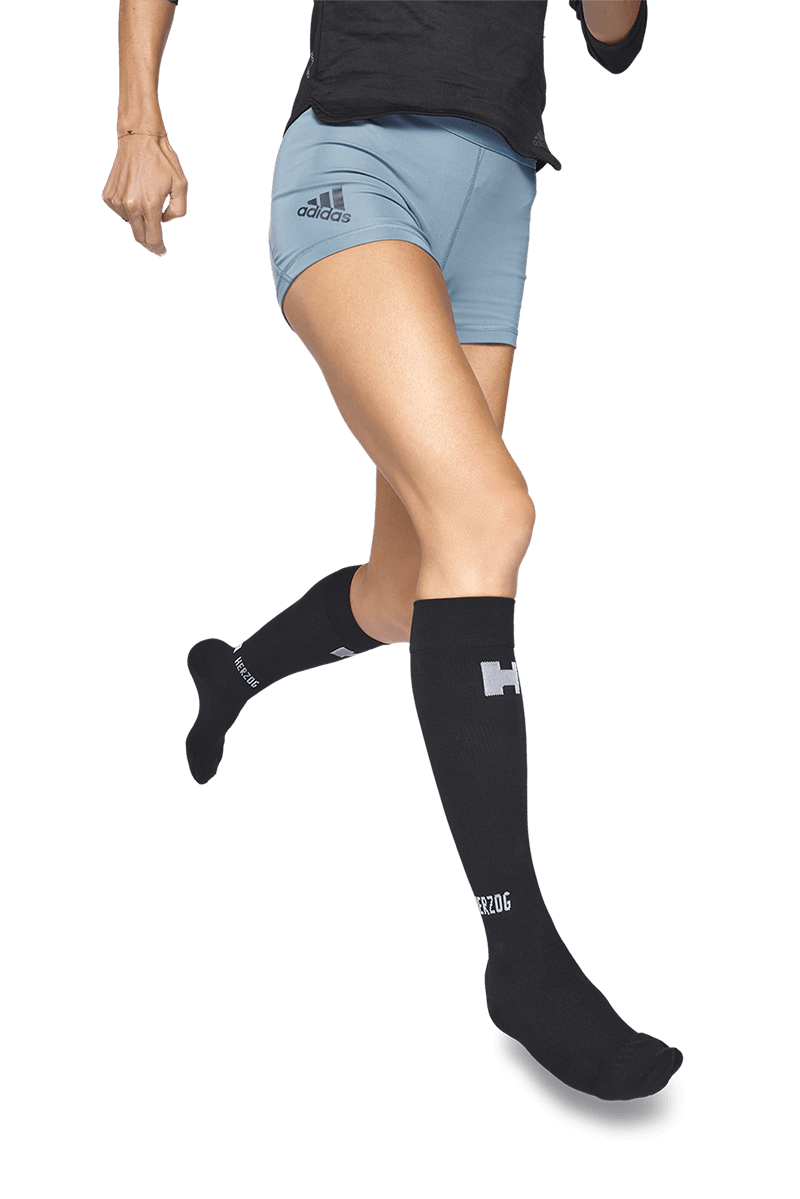Lifespan Compression
How long will the Herzog PRO socks function optimally?
Everyone knows by now that the Herzog PRO Compression Socks are the cream of the crop in terms of operation and functionality. Studies have shown this. Your legs are measured accurately at 5 precisely defined points and that combined with your shoe size gives your compression-like size. This ensures that the sock fits exactly around your individual leg contour. Only a correctly measured sock, which causes a precisely defined compression on your leg from 30mm Hg around your ankle to 23mmHg below the knee, ensures that you suffer less from calf complaints, shin problems and Achilles tendon injuries. Plus, you’ll recover faster.
This optimal effect depends on the amount of compression and the compression course, from far away from the heart to the heart, i.i. from the ankle towards the knee. You can imagine that during use, the tension, so the compressing effect, gradually decreases and therefore also the effect. You don’t notice that right away because it’s very gradual.

Putting on the compression sock
A simple indicator to determine whether the socks are in need of replacement is the ease of putting them on. It is often difficult to put on new socks. Logical, because the highest compression is applied to the underside of the leg – your ankle and the underside of the calf. Unfortunately, the diameter of the sock is smallest there, so you can imagine that it is not easy to put them on. The larger size of your foot and heel-instep line has to go through that small opening. Actually, that harder donning is proof that proper compression is applied to your leg. So it is not a disadvantage, but an advantage.
When is the Compression sock in need of replacement?
But when do you know when the sock needs to be replaced? Below you will find a simple calculation. Adjust it for your situation. Maybe you walk less often or more often, you travel shorter or longer distances.
Suppose you walk 3 times a week and you wear the socks during each training, with warmup and cooling-down you end up with an average of 10 km at a time. That means 30km per week, 120km per month. After about 6 months you have walked more than 700km in them. You can assume that the optimal compression is guaranteed up to between about 750 and 1000km and let that be exactly the lifespan of a pair of good running shoes.
Now you can make your own calculation based on your own training kilometres. If you make more kilometers, the life span will be shorter in time. The same goes for trail runners who run a lot of altimeters. Of course, the altimeters themselves also count as kilometers. A race of 30km with 500 vertical meters counts as 35km and not 30km. If you only use our socks during competitions or, for example, only during that one intensive track training in the week, then the lifespan is of course longer.
There is another variable in the life of the socks, namely how you deal with putting them on and taking them off. If you put the socks on in the right way, or not, of course that also has an effect on the lifespan. The same applies to the way of washing. The socks are likely to be washed more than the tubes, which will make the life of the tubes longer. It is also important that you do not wash compression products with fabric softener.
To make things easy, you can remember the following: When you need new shoes, get some new socks too. Of course, you should not wait to buy new shoes until the holes fall in but when the support and shock absorption no longer function. Also between 750 and 1000km.

